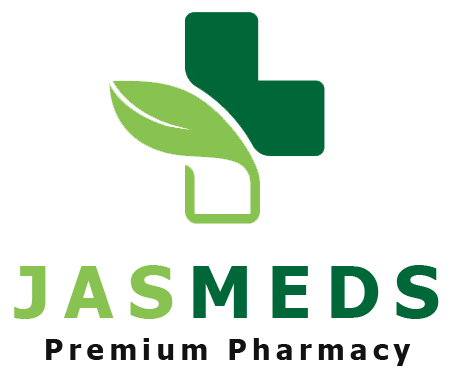Reliable Treatment for Opioid Addiction?

Knowing how to treat opioid addiction starts with recognizing treatment as medical engagement, not a moral issue.
Evidence-based methods include medication-assisted therapy, behavioral counseling, and peer support. Patients benefit when tailored protocols are developed with healthcare providers rather than relying solely on abstinence.
This thorough method enhances the chances of sustained recovery.
Evaluating the Best Treatment for Opioid Addiction
When considering the best treatment for opioid addiction, research supports combining medications with structured therapy.
Methadone maintenance, buprenorphine therapy, and naltrexone can reduce cravings and relapse risk. The decision is based on the individual patient’s requirements and health condition.
Clinical comparisons suggest that methadone often results in higher treatment retention, while buprenorphine offers greater flexibility and a lower risk of overdose. An informed discussion with a qualified healthcare provider is essential to determine the most appropriate and safe treatment regimen.
Assessing the Safety of Methadone for Addiction Recovery
Many ask, “Is methadone safe for addiction recovery?”
Studies show that regulated methadone reduces overdose deaths by nearly 50 percent. It stabilizes brain chemistry, eliminates withdrawal, and reduces illicit opioid use. However, strict monitoring is essential.
The U.S. now allows longer take-home supplies for stable patients. When provided by certified clinics with counseling support, methadone is a safe, proven recovery tool.
Weighing Long-Term Effects of Opioid Addiction Treatment
Understanding the long-term effects of opioid addiction treatment includes improved social functioning, reduced overdose risk, and fewer health complications.
Retention in treatment correlates with better outcomes for years. Regular medical review helps prevent tolerance and organ strain. Patients require ongoing monitoring for metabolic effects and mental health.
Care teams aim to maintain stability while mitigating risks.
Recognizing the Side Effects of Buprenorphine
Know the side effects of buprenorphine before starting therapy. Common issues include nausea, dizziness, headache, dry mouth, and constipation.
Less common but serious reactions like respiratory depression or QT prolongation may occur, particularly with other sedatives. Regular check-ups help detect adverse effects early.
Patients on buprenorphine benefit from coordinated care and clear education.
Comparing Methadone Tablet Access and Safety
Patients may ask about a methadone tablet in Pakistan, but sourcing quality medication outside regulated clinics is risky.
Coordination with providers helps ensure treatment consistency and safety for individuals transitioning between international and domestic care settings.
Combining Medications with Therapy for Best Results
Effective programs for treating opioid addiction integrate medication with therapy.
Cognitive-behavioral therapy, contingency management, family counseling, and peer support address the underlying causes of addiction. This dual modality improves daily functioning and reduces relapse.
Access to medical treatment, combined with encouragement for psychosocial support, leads to more holistic care and improved recovery outcomes for patients.
Treatment for Opioid Addiction over Time
Determining the most effective treatment for opioid addiction requires ongoing assessment. Clinicians regularly monitor factors such as cravings, relapse episodes, physical health, and mental well-being.
Lab tests monitor medication levels and detect side effects. Adjustments may involve dose changes or switching from methadone to buprenorphine or naltrexone.
Constant clinical oversight helps maintain optimal therapy over the long term.
Addressing Criticisms: Is Methadone Safe for Addiction Recovery?
Methadone is often stigmatized, with critics arguing that it merely substitutes one addiction for another.
However, extensive research has shown that when medically managed, methadone does not produce the same intoxication effects as illicit opioids, allowing individuals to maintain daily functioning.
Moreover, treatment facilities typically integrate counseling, therapy, and social services with medication, providing comprehensive support. As patients begin to understand that methadone facilitates a path to meaningful recovery, they are more likely to view it as a helpful stepping stone rather than merely a dependency.
Tracking Long-Term Effects of Opioid Addiction Treatment on Lifestyle
Long-term opioid addiction therapies are designed to foster sustainable improvements in various aspects of life. These programs have been linked to reduced risks of overdose and addiction-related health complications, as well as enhancements in employment opportunities and social integration.
Research indicates that many patients remain engaged in treatment for five years or longer, effectively ceasing illicit opioid use.
Continuous support is crucial, and it may include outpatient care, peer support groups, and initiatives promoting a healthy lifestyle to ensure enduring recovery.
Why Counseling is Important in Opioid Addiction Treatment
Therapy is essential in the healing journey for those battling opioid addiction. It offers a secure environment for individuals to examine the root causes of their addiction, promoting emotional recovery and personal development.
Utilizing different therapeutic methods, like cognitive-behavioral therapy or motivational interviewing, counselors assist individuals in creating coping mechanisms to manage triggers and pressure without turning to substance use.
Additionally, counseling enhances the effectiveness of medication-assisted treatment by addressing the psychological aspects of addiction, promoting a holistic approach that supports sustained recovery and overall well-being.
Managing the Side Effects Proactively
While the side effects of buprenorphine are generally mild, it is important for patients to remain vigilant and proactive in monitoring their health, particularly for serious reactions like difficulty breathing when used in conjunction with sedatives.
Regular check-ups and medication reviews can significantly mitigate such risks. Educational materials about medication interactions and potential side effects can empower patients, leading to better tolerance and understanding of their treatment plans.
Staying informed is essential for achieving positive long-term outcomes in addiction recovery.
Final Word
Looking for reliable treatment for opioid addiction?
Medication-assisted options like methadone and buprenorphine are the most proven strategies. When providers answer how to treat opioid addiction, consider the safety of methadone, examine long-term effects, and manage side effects, patients gain the foundation for lasting recovery.
Jasmeds, as a trusted online pharmacy in Pakistan, ensures that genuine supplies are provided under safe protocols. Even if patients receive methadone abroad, continuity of care is crucial.
We support this journey by ensuring access to genuine medication, patient education, and coordination with U.S. care teams. Recovery is a steady path, and with safe medication, robust monitoring, and support, people can reclaim control and regain quality of life.
